When Walter Gropius came to London in 1934, he decided that Henry Moore was the contemporary British artist he most admired. This is hardly surprising. There was no other who drew on such a wide range of sources or pursued variations on thematic ideas with such imaginative energy. It is well known that Moore’s great series of reclining figures took their starting point from a Mexican statue of the rain goddess Chacmool. They then underwent extensive modulations: assimilating allusions to hills and caves; shattering into two or more parts; and courting Surrealist disquiet. Moore knew that shapes and forms tap into the subconscious and activate a deep seam of human memories. It explains why often in his art no single expressive vein prevails.
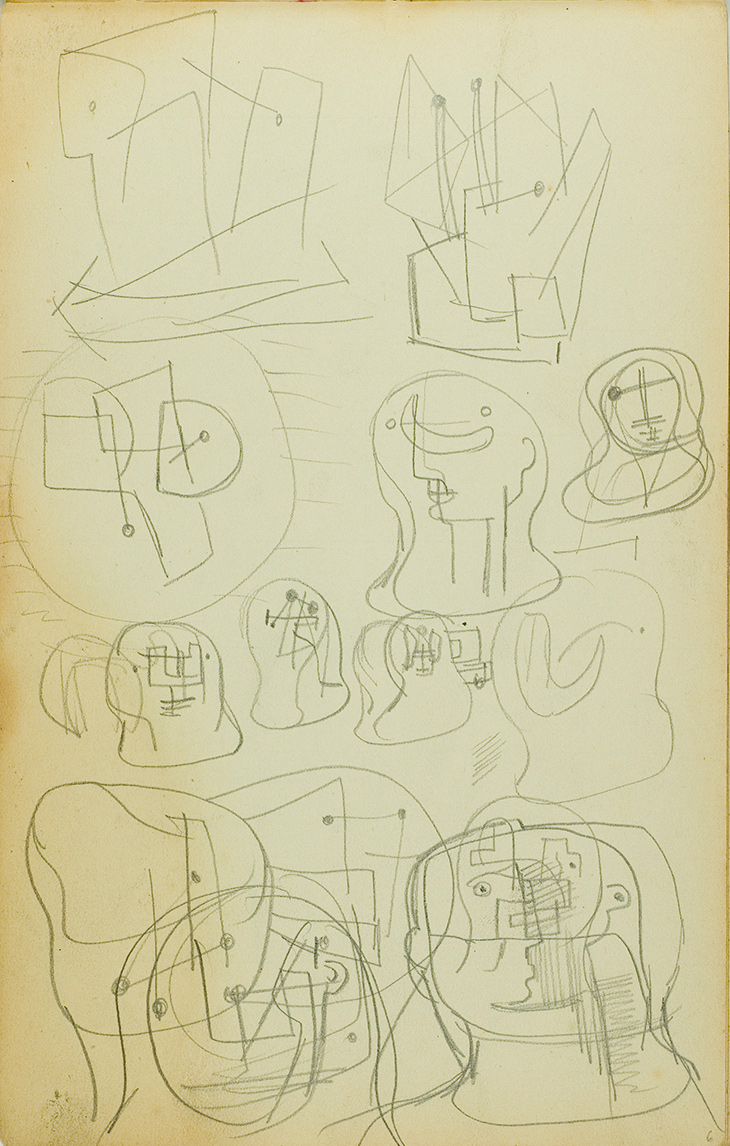
Head Studies (c. 1935), Henry Moore. © The Henry Moore Foundation
A magnificent demonstration of this is currently on show at the Wallace Collection. This is a museum with an embarras de richesses but one that is very rarely associated with modern art. Yet Henry Moore seems perfectly at home here, in an exhibition of his helmet heads and related sculptures alongside the objects that inspired them, the latter mostly drawn from the museum’s collection of armour. And as the exhibition unfolds, the viewer begins to see what caught Moore’s eye, sparked a response or began his extemporisation on motifs that furthered his own visual language.
This is the first time that Moore’s debt to the Wallace Collection and to armour has been properly explored. He began by making drawings of the collection in a sketchbook dated 1935. It is here proudly exhibited in a case of its own, like a rare incunabulum, with related drawings nearby. Yet the exhibition begins in West Yorkshire, at Methley, where Moore was taken to St Oswald’s Church as a schoolboy. He returned to it often while visiting a favourite aunt. Its profusion of stone carvings includes gargoyle-like 11th-century heads, which set him up, he later realised, to appreciate the power of Mexican sculpture. The image shown here, by means of a photograph (regrettably not reproduced in the catalogue) shows Sir Lionel de Welles and his wife, Cecilia in the form of life-size recumbent effigies. Tobias Capwell, the exhibition’s curator, suggests that Welles’s armour-clad effigy – and that of Cecilia’s father, Robert Waterton, also found in this church – may have offered Moore his first encounter with ‘figures armed for eternity in the accoutrements of war’.
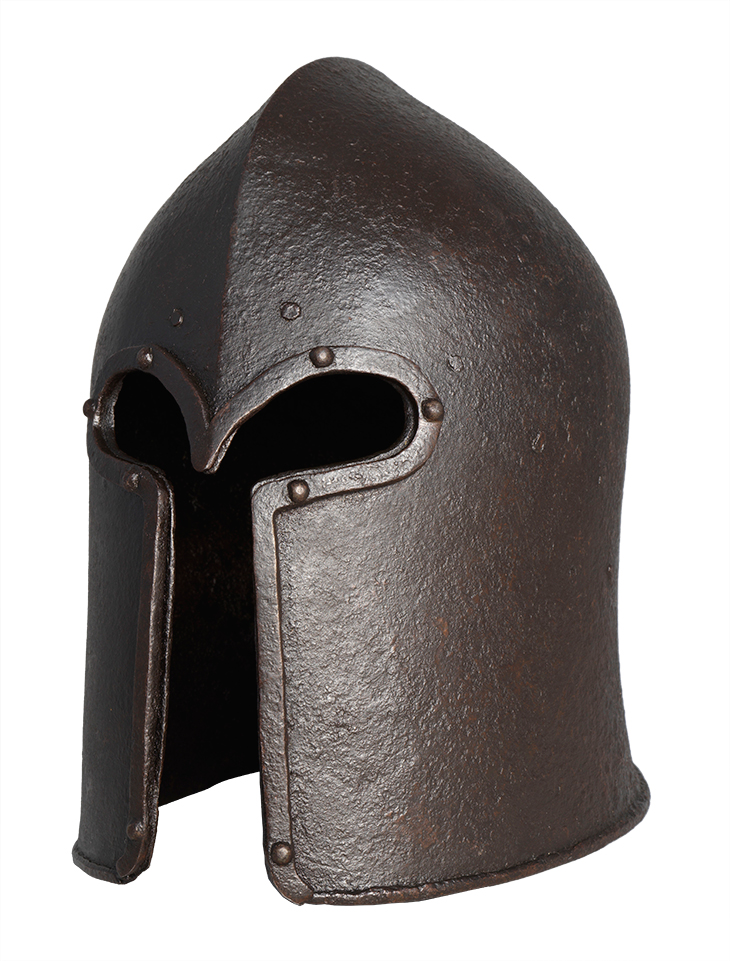
Sallet (c. 1450–70), Antonio Missaglia. © The Wallace Collection
Also in this room are a series of helmets. We encounter two in the Corinthian style, in which an elegantly shaped opening around the eyes, with a ‘widow’s peak’, makes vision possible while allowing a drop-down element to protect the nose. Despite this similarity in purpose and style, these helmets are two millennia apart, one Italian (c. 1470), the other Greek (mid seventh century BC). Other helmets on view are from the First World War, as used by German and British soldiers, including Moore, who enlisted in 1917 and fought in the Battle of Cambrai the same year.
Helmets in themselves have a powerful sculptural presence. Yet this exhibition makes it apparent that Moore’s thinking went far beyond the basic functional purposes of these objects. He was attracted by what he called ‘the mystery of semi-obscurity’ that the helmet creates, ‘where one can only half distinguish something’. He had earlier developed an interest in shapes that act like protective shells around smaller and more vulnerable forms. This relationship between the internal and external was now taken further, and appears from the very first sculpture he made on this theme: The Helmet, a bronze from 1939–40.
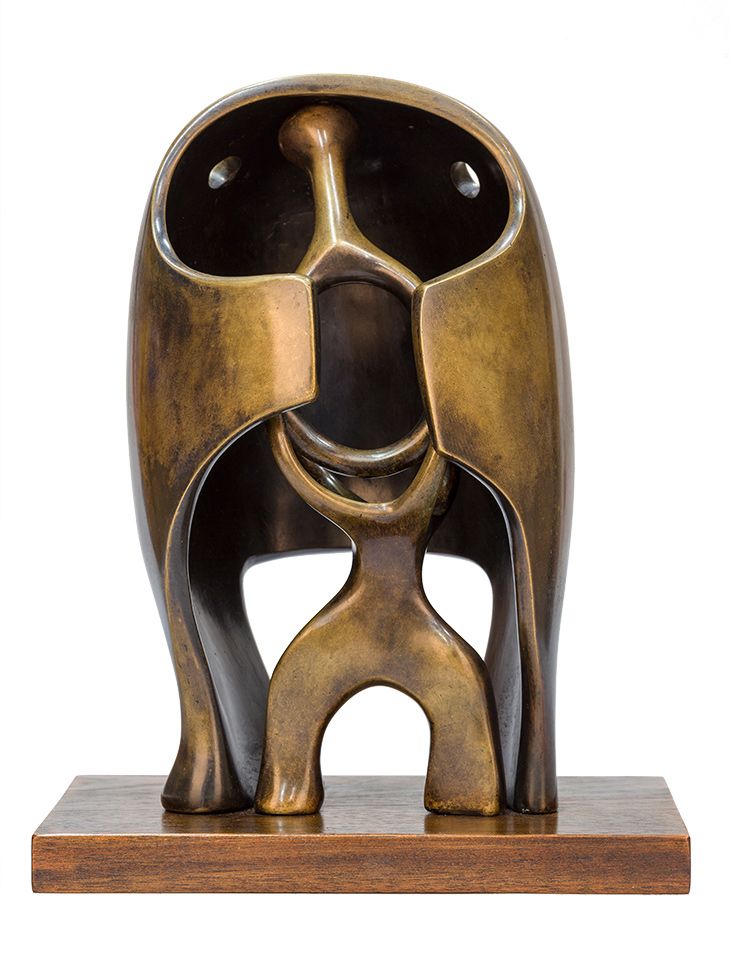
The Helmet (1939–40), Henry Moore. © The Henry Moore Foundation
Like many others Moore was aware of the rising political tensions across Europe at the time. In 1938, he signed a Surrealist manifesto that urged the British government to end its policy of non-intervention in relation to the Spanish Civil War. The following year he made his first lithograph, Spanish Prisoner, in which a barred and helmeted head is found behind barbed wire. It was to be sold in aid of Spanish prisoners of war held in French detention camps, but the onset of the Second World War prevented it from being editioned. Yet darker and more sinister is his Drawing for Metal Sculpture: Two Heads (1939), lent by the British Museum – the premonition and arrival of war had clearly deepened the sculptor’s concern with his series of helmet heads.
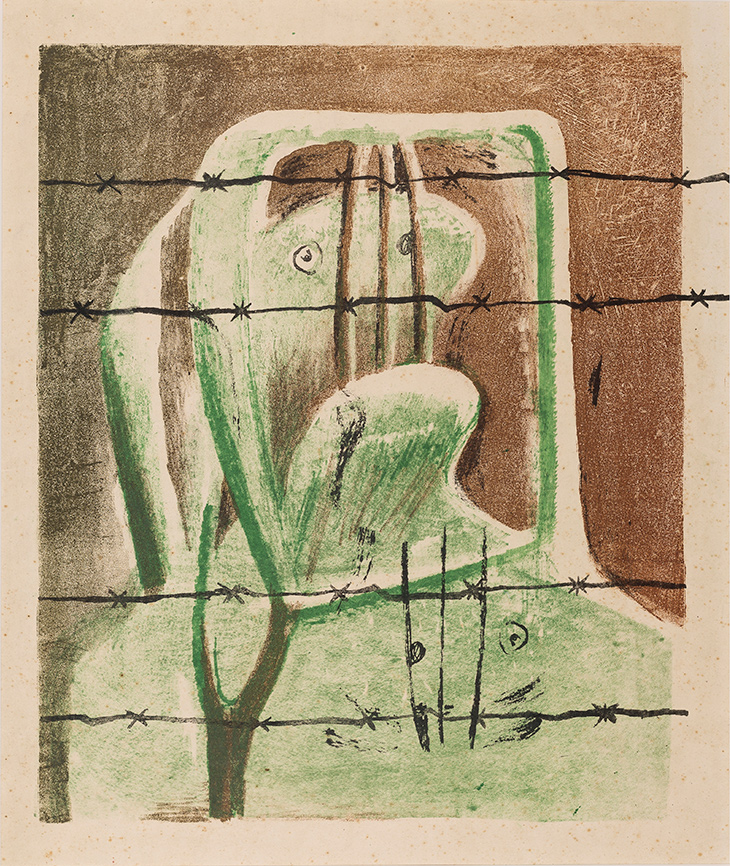
Spanish Prisoner (1939), Henry Moore. © The Henry Moore Foundation
Moore returned to the motif of the helmet in 1963 when approached by the University of Chicago, which wanted a monument to celebrate the first controlled atomic reaction, achieved by Enrico Fermi in 1942. Moore’s initial maquette, Atom Piece, is included in this show. Both in the maquette and in the final sculpture, which is nearly four metres high and called Nuclear Energy, he drew on the curved forms of his earlier helmet heads to depict this new symbol of power. As a persuasive analysis in the exhibition catalogue suggests, Moore wished to address the duality within his subject, which had resulted from a discovery that could be used for both good and evil.
‘Henry Moore: The Helmet Heads’ is at the Wallace Collection, London, until 23 June.
Unlimited access from just $16 every 3 months
Subscribe to get unlimited and exclusive access to the top art stories, interviews and exhibition reviews.

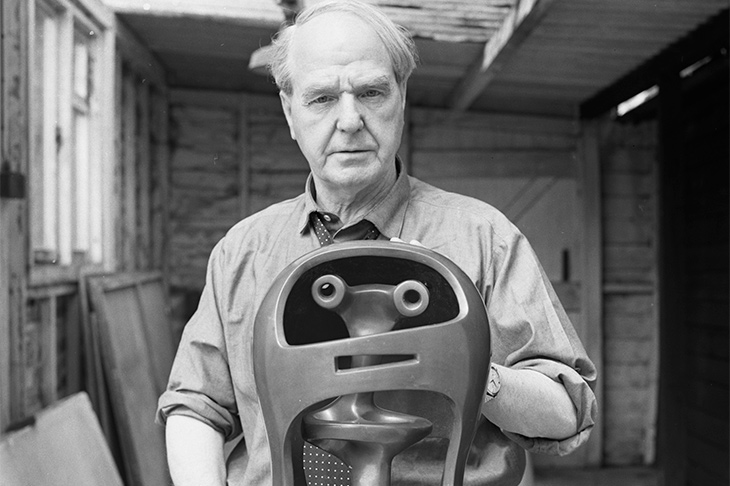
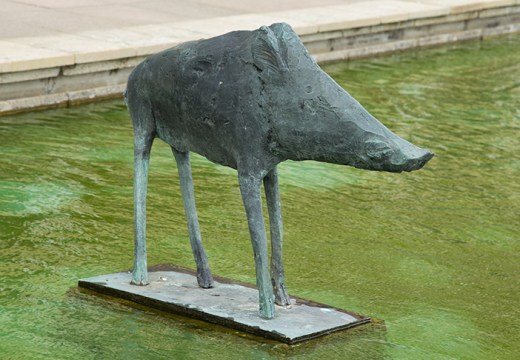
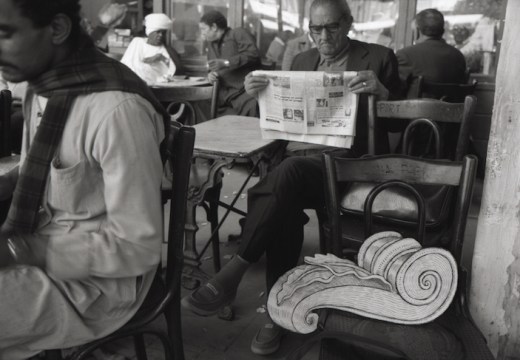
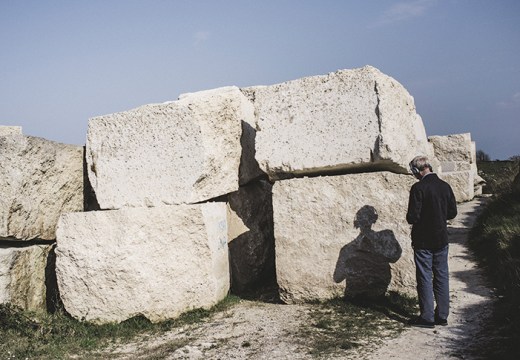









![Masterpiece [Re]discovery 2022. Photo: Ben Fisher Photography, courtesy of Masterpiece London](http://www.apollo-magazine.com/wp-content/uploads/2022/07/MPL2022_4263.jpg)
It’s time for the government of London to return to its rightful home